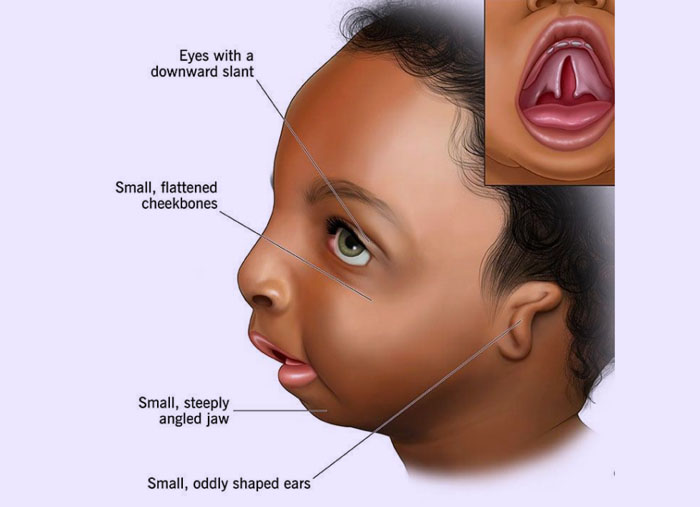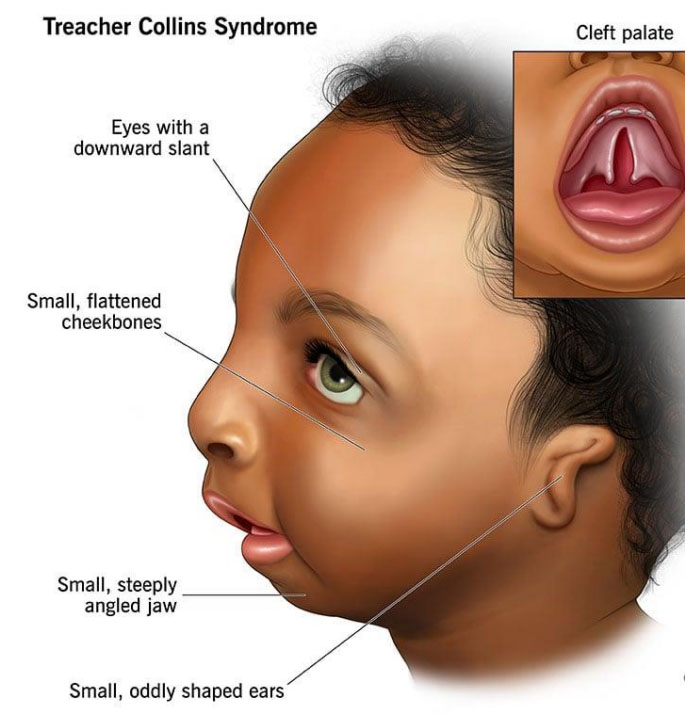- NEED HELP? CALL US NOW
- +919995411505
- [email protected]
TREACHER COLLINS SYNDROME

Treacher Collins syndrome is a hereditary disease that leads to problems with
the structure of the face.
- It is caused by a defective protein called treacle.
- It is autosomal dominant
- TCOFL gene mutations are the main cause for this syndrome
- The treacle gene is found on chromosome 5
- Four subtypes of Treacher Collins syndrome exist. TCS can be caused by
pathogenic variants in the TCOF1, POLR1D, POLR1C and POLR1B
genes. - Genetically, the TCOF1 gene contains 27 exons which encodes the
Treacle protein. In TCOF1, over 200 pathogenic variants have been
identified, of which most are deletions leading to a frame-shift, that result
in the formation of a termination codon
Other Names
- Treacher Collins–Franceschetti syndrome
- Zygoauromandibular dysplasia
- Mandibulofacialdysostosis (MFD1)
Clinical features
- Associated with abnormal differentiation of the first and second
pharyngeal arches, occurring during fetal development. - microtia with conductive hearing loss, slanting palpebral fissures with
possibly coloboma of the lateral part of lower eyelids, midface
hypoplasia, micrognathia as well as sporadically cleft palate and choanal
atresia or stenosis.

Prognosis
- Children that are born with this typically grow to be normal adults with normal intelligence
Diagnosis
- This condition is usually seen at birth.
- Genetic counseling can help families understand the condition and how to care for the patient.
Treatment
- Plastic surgery is usually a must to fix the receding chin and other facial abnormalities
- Hearing loss is treated to ensure better performance in school
- Corrective surgery of the underdeveloped jaw
- Speech therapy for eating and speech problems
Related posts
April 10, 2025
April 9, 2025
April 4, 2025




